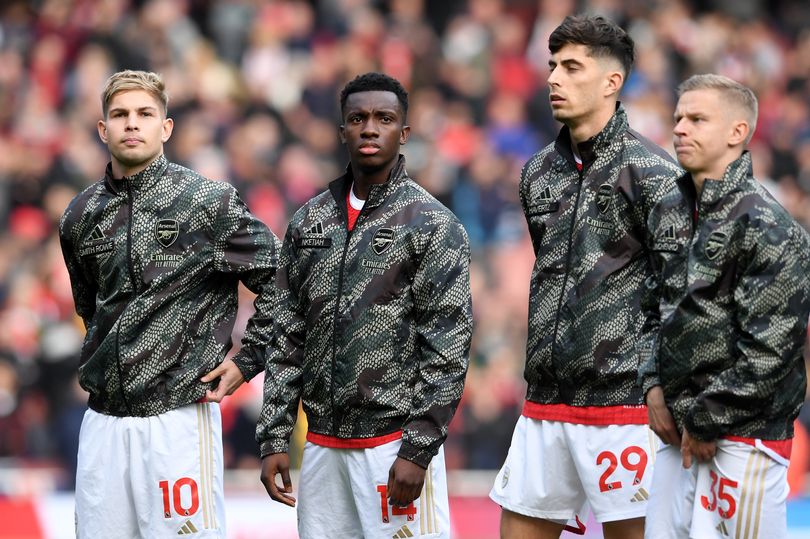Arsenal could see a big chunk of their normal bench be sold this summer. With just 19 starts between them, it is looking like the end for Emile Smith Rowe, Reiss Nelson, Aaron Ramsdale, and Eddie Nketiah.

Thomas Partey could also make way with just one year left on his contract and injury issues. The club’s attraction to midfielders across Europe certainly suggests he is not in the long-term plans as a 30-year-old.
Even the two transformative arrivals of 2022, Oleksandr Zinchenko and Gabriel Jesus, no longer have clear roles and talk of an exit has surfaced in some quarters. They are now simply part of a growing group of outsiders to Mikel Arteta’s regular team. Unlike other sides at the top, Arsenal rarely rotate, even in Europe. Those who he favours are in for good, those not playing face a challenge to turn it around.
There is a drop-off, for example, from those who started 30 games to those who started 20 in the Premier League last season. Eight players started 30 games and had a big role but eight players also started 20 or less in the league, a large disparity.
In one sense this is squad building and dealing with injuries, but it is also noticeable just how small a part the players listed here actually have. Ramsdale is second choice behind David Raya, Nketiah scored a hat-trick but only managed five goals in total, Smith Rowe is often ignored even when chasing games and Nelson has been a bystander to it all.
Partey’s injury makes analysing his minutes harder but, moving forward, the questions exist regardless. Jesus and Zinchenko both had their own fitness issues as well but aren’t first choice anymore. How do the trio all contend with this scenario, and how can Arsenal afford to not only make important additions (up front and in midfield) as well as replace those that leave with smaller roles?
It’s not easy, that’s for sure. Edu Gaspar has a real challenge on his hands to keep things fresh but also ensure that Arteta is set up with a squad capable of challenging for the title once more.
Sales are expected, and that boosts not only the club’s financial position but also the funds available to buy the primary targets. Selling hasn’t been a strong point in recent years, though.
It has been seven years since the last player went for over £30million, and that was Alex Oxlade-Chamberlain. Alexis Sanchez moving on the same season alongside the exits of Theo Walcott, Wojciech Szczesny, Franci Coquelin, and Olivier Giroud across the two 2017/18 windows was a big cull for a short space of time.
Gabriel Paulista and Kieran Gibbs also left but then it was one sale of £25million or more (Alex Iwobi) in another seven windows before Joe Willock moved to Newcastle. Even with inflated transfer prices in the past few years, Folarin Balogun is the only player since Willock to draw in even close to £30million.
When looking at the possible departures this year, it could be hard for that to change. When the stocks of Ramsdale, Jesus, Zinchenko, Nketiah, Smith Rowe, Partey, and even Tierney were at their highest Arsenal didn’t want to sell, understandably.
But a problematic 12 months can change everything. According to figures from Transfermarkt this group of players alone have seen a decline in their market value from the highest to the current estimate of £78million. That is a big number to possibly not get back.
Much like with signings, who can see their prices spike and rocket with form over a small period, damage can easily be done in the opposite sense too. The impact this has on the profitability and sustainability position shouldn’t be underestimated.
Arsenal have spent big in the past few summers to turn things around and have been rewarded. But spending comes at a cost. Even with improved Premier League prize money as a reward for their strong finishes, and the European luxuries flowing in, PSR is a big beast.